
The Batavian Republic was the successor state to the Republic of the Seven United Netherlands. It was proclaimed on 19 January 1795 and ended on 5 June 1806, with the accession of Louis Bonaparte to the Dutch throne. From October 1801 onward, it was known as the Batavian Commonwealth. Both names refer to the Germanic tribe of the Batavi, representing both the Dutch ancestry and their ancient quest for liberty in their nationalistic lore.

The United Provinces of the Netherlands, officially the Republic of the Seven United Netherlands and commonly referred to in historiography as the Dutch Republic, was a confederation that existed from 1579 until the Batavian Revolution in 1795. It was a predecessor state of the present-day Netherlands and the first independent Dutch nation state. The republic was established after seven Dutch provinces in the Spanish Netherlands revolted against Spanish rule, forming a mutual alliance against Spain in 1579 and declaring their independence in 1581. The seven provinces it comprised were Groningen, Frisia, Overijssel, Guelders, Utrecht, Holland, and Zeeland.

The Kingdom of Holland was the successor state of the Batavian Republic. It was created by Napoleon Bonaparte in March 1806 in order to strengthen control over the Netherlands by replacing the republican government with a monarchy. Since becoming emperor in 1804, Napoleon sought to extirpate republican tendencies in territories France controlled, and placed his third brother, Louis Bonaparte, on the throne of the puppet kingdom. The name of the leading province, Holland, now designated the whole country. In 1807, East Frisia and Jever were added to the kingdom.
The Union of Utrecht was an alliance based on an agreement concluded on 23 January 1579 between a number of Dutch provinces and cities, to reach a joint commitment against the Habsburg prince Philip II. By joining forces, they hoped to force him to stop his harsh administrative measures. In addition, some important political matters were regulated in areas such as defence, taxation and religion, which is why the treaty in question is also seen as a first version or precursor of a later constitution. The Union of Utrecht complemented the so-called General Union of 1576, established by the Pacification of Ghent, which is why it is also referred to as the Further Union.

There are twelve provinces of the Netherlands representing the administrative layer between the national government and the local governments, with responsibility for matters of subnational or regional importance.
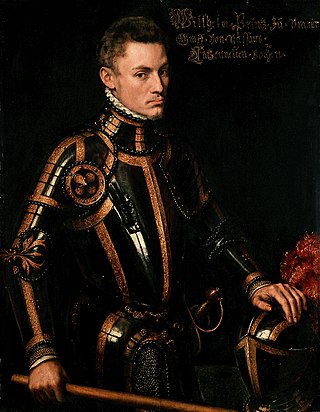
In the Low Countries, a stadtholder was a steward, first appointed as a medieval official and ultimately functioning as a national leader. The stadtholder was the replacement of the duke or count of a province during the Burgundian and Habsburg period.

Johan de Witt was a Dutch statesman who was a major political figure during the First Stadtholderless Period, when flourishing global trade in a period of rapid European colonial expansion made the Dutch a leading trading and seafaring power in Europe, commonly referred to as the Dutch Golden Age. De Witt was elected Grand Pensionary of Holland, and together with his uncle Cornelis de Graeff, he controlled the Dutch political system from around 1650 until the Rampjaar of 1672. This progressive cooperation between the two statesmen, and the consequent support of Amsterdam under the rule of De Graeff, was an important political axis that organized the political system within the republic.
The Pacification of Ghent, signed on 8 November 1576, was an alliance between the provinces of the Habsburg Netherlands. The main objectives were to remove Spanish mercenaries who had made themselves hated by all sides due to their plundering, and to promote a formal peace with the rebellious provinces of Holland and Zeeland.
The Generality Lands, Lands of the Generality or Common Lands were about one-fifth of the territories of the United Provinces of the Netherlands, that were directly governed by the States-General. Unlike the seven provinces of Holland, Zeeland, Utrecht, Guelders, Overijssel, Friesland and Groningen, these territories had no States-Provincial and were not represented in the central government. At the time of the Union of Utrecht, these territories were under Spanish control, and would only be conquered by the Dutch Republic later in the war. From an economic point of view, they were exploited with heavy taxes and levies.
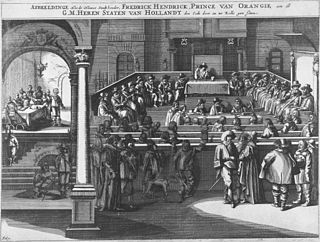
The States of Holland and West Frisia were the representation of the two Estates (standen) to the court of the Count of Holland. After the United Provinces were formed — and there no longer was a count, but only his "lieutenant" — they continued to function as the government of the County of Holland.
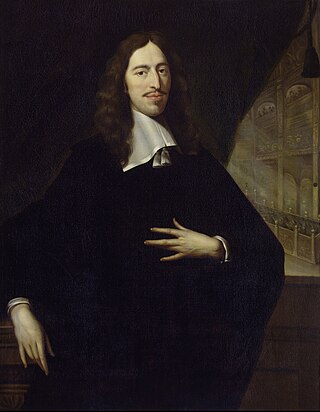
A pensionary was a name given to the leading functionary and legal adviser of the principal town corporations in the Low Countries because they received a salary or pension.
The grand pensionary was the most important Dutch official during the time of the Dutch Republic. In theory, a grand pensionary was merely a civil servant of the Estates of the dominant province, the County of Holland, among the Seven United Provinces. In practice, the grand pensionary of Holland was the political leader of the entire Dutch Republic when there was no stadtholder at the centre of power.

Laurens Pieter van de Spiegel was Grand Pensionary of Zeeland and, from 9 November 1787 to 4 February 1795, of Holland. He was an Orangist, which means that he was a supporter of Prince William V of Orange. He became grand pensionary of Holland when the Prussian army had reinstated William V in power in 1787. He fled to Germany in 1795, when the French defeated the Dutch army and an anti-Orangist revolution broke out. He died in Lingen, Prussia. Van de Spiegel was the last Grand Pensionary of the Republic of the Seven United Netherlands, which was replaced with the Batavian Republic modelled after the French revolutionary state.

The Perpetual Edict was a resolution of the States of Holland passed on 5 August 1667 which abolished the office of Stadtholder in the province of Holland. At approximately the same time, a majority of provinces in the States General of the Netherlands agreed to declare the office of stadtholder incompatible with the office of Captain general of the Dutch Republic.

In the history of the Dutch Republic, Orangism or prinsgezindheid was a political force opposing the Staatsgezinde (pro-Republic) party. Orangists supported the Princes of Orange as Stadtholders and military commanders of the Republic, as a check on the power of the regenten. The Orangist party drew its adherents largely from traditionalists – mostly farmers, soldiers, noblemen and orthodox Protestant preachers, though its support fluctuated heavily over the course of the Republic's history and there were never clear-cut socioeconomic divisions.
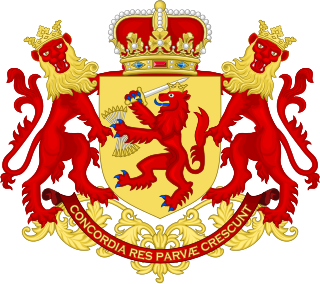
The Dutch Republic Lion was the badge of the Union of Utrecht, the Republic of the Seven United Netherlands, and a precursor of the current coat of arms of the Kingdom the Netherlands.
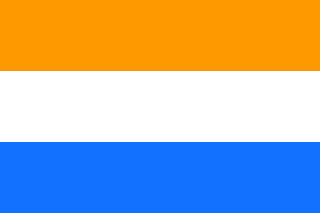
The Dutch Republic existed from 1579 to 1795 and was a confederation of seven provinces, which had their own governments and were very independent, and a number of so-called Generality Lands. These latter were governed directly by the States-General, the federal government. The States-General were seated in The Hague and consisted of representatives of each of the seven provinces.
François Vranck, was a Dutch lawyer and statesman who played an important role in the founding of the Dutch Republic.

The Dutch States Party was a political faction of the United Provinces of the Netherlands. This republican faction is usually (negatively) defined as the opponents of the Orangist "Pro-Prince" faction, who supported the monarchical aspirations of the stadtholders, who were usually members of the House of Orange-Nassau. The two factions existed during the entire history of the Republic since the Twelve Years' Truce, be it that the role of "usual opposition party" of the States Party was taken over by the Patriots after the Orangist revolution of 1747. The States Party was in the ascendancy during the First Stadtholderless Period and the Second Stadtholderless Period.








































